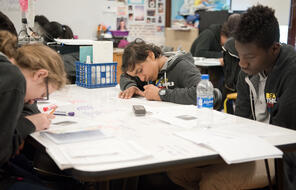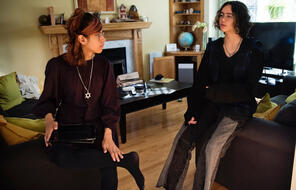A Part and Apart: Inclusion and Exclusion in Our Jewish Communities
Duration
Two 50-min class periodsSubject
- History
- Social Studies
Grade
6–8Language
English — USPublished
Overview
About This Lesson
This is the third lesson in a three-lesson series highlighting the historical and contemporary experiences of Jews of Color, Sephardic Jews, and Mizrahi Jews while also considering the impact of exclusion, antisemitism, and racism on people who share these Jewish identities. This two-day lesson begins by using the story of Passover to examine how students define their own identities within the context of the Four Children. This exercise frames an exploration of how identity labels can be both beneficial and harmful, and provide a sense of belonging or a sense of exclusion. The lesson then narrows in focus to examine the Jewish identity label “Jews of Color.” Through survey data, personal testimonies, and artistic expressions, students learn about the experiences of Jews of Color, both within and outside of their Jewish communities, and consider how well their own communities strive to be inclusive spaces where diversity of Jewish identity is welcomed and represented.
This lesson was created in partnership with the Jewish Education Project in conjunction with the Shine A Light Initiative.
Preparing to Teach
A Note to Teachers
Before teaching this lesson, please review the following information to help guide your preparation process.
Lesson Plan
Day One: Labels That Help and Labels That Hurt
Day Two: A Part and Apart
Materials and Downloads
Quick Downloads
Get Files Via Google
Resources from Other Organizations
Additional Resources
Unlimited Access to Learning. More Added Every Month.
Facing History & Ourselves is designed for educators who want to help students explore identity, think critically, grow emotionally, act ethically, and participate in civic life. It’s hard work, so we’ve developed some go-to professional learning opportunities to help you along the way.
Exploring ELA Text Selection with Julia Torres
On-Demand

Working for Justice, Equity and Civic Agency in Our Schools: A Conversation with Clint Smith
On-Demand

Centering Student Voices to Build Community and Agency
On-Demand


















